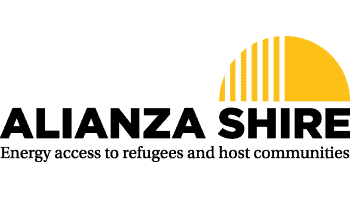The Kobe refugee camp’s solar mini-grid is up and running: how to make it sustainable over time?
One of the key components of the Alianza Shire’s intervention in Kobe -the creation of a solar mini-grid capable of providing clean, renewable energy to 16 community services- has finally completed the installation phase, which began in June, and is now fully operational following testing.
Thanks to this system, community spaces including schools, health centers, NGO offices, and local institutions are now receiving the energy needed for essentials like lighting, fan-powered cooling, computer operation, refrigeration, communication devices, and even electric cookers for school meal preparation.
The management model, the key to the sustainability of the mini-grid over time
To ensure that the energy supply is consistently reliable, of high quality, affordable, safe, and sustainable in the long run, Alianza Shire has spent three years developing a robust management model. This model, tailored to the unique humanitarian context and project constraints, is illustrated in the infographic below.

In this model, the mini-grid supplies 16 prioritized community services, with institutions responsible for these services—such as UNHCR and Save the Children—connected as an energy community. As co-managers of the energy produced, these institutions participate in decision-making alongside the Ethiopian government’s Refugee & Returnee Service (RRS), which is responsible for protecting refugees and coordinating aid across the country. After installation, Alianza Shire (AECID, itdUPM e Iberdrola en colaboración con ACNUR) transferred ownership of the mini-grid to the RRS.
The RRS then delegated the mini-grid’s operation and maintenance to a local energy cooperative, comprising members of both the refugee and host communities. This cooperative is also responsible for managing payments from beneficiary institutions via a financial institution. Each month, beneficiary institutions contribute a solidarity fee proportional to their energy use. These contributions cover the cooperative’s operational costs and create a reserve fund for replacement components, with fees significantly lower than the area’s typical costs for energy services (electricity, fuel, or firewood).
In short, this model fosters cooperation across various stakeholders to provide a renewable, sustainable, and efficient electricity service adapted to the needs of beneficiary institutions. The project brings substantial environmental and social benefits to the community.














